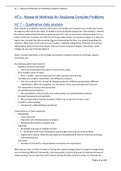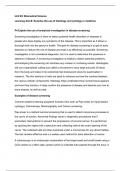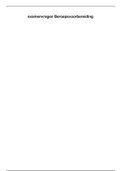Samenvatting
Summary Everything you need to know for the 2nd exam of RMCP, MPA year 1
- Instelling
- Vrije Universiteit Amsterdam (VU)
This is a summary of everything you need to know for the 2nd exam of RMCP (Reseach Methods for analyzing Complex Problems), a course in the Master's programme MPA (Management, Policy Analysis, and Entrepreneurship in health and life sciences) at VU Amsterdam. Written in English.
[Meer zien]







